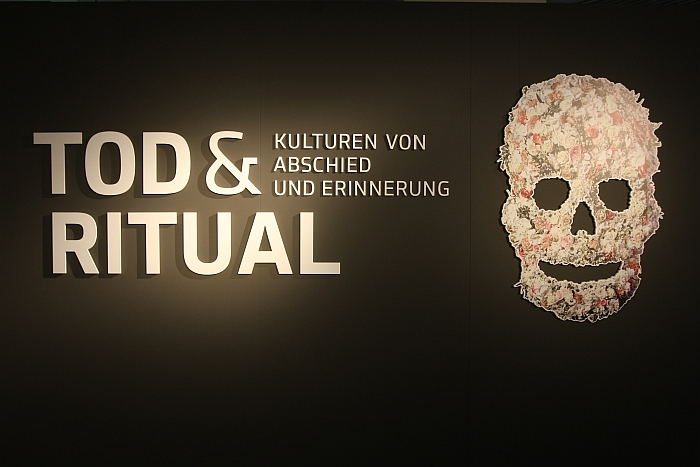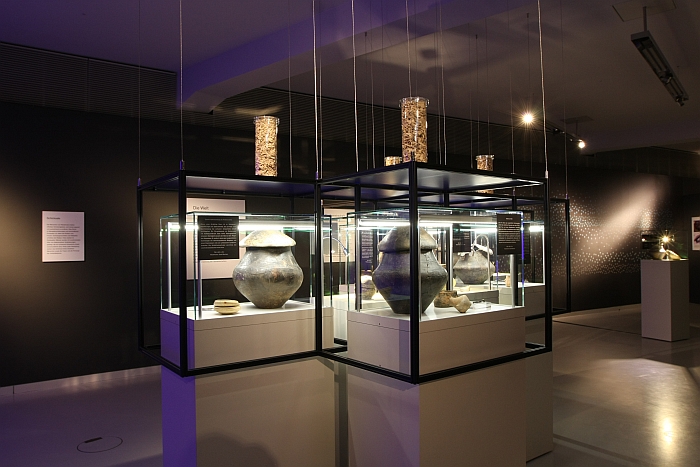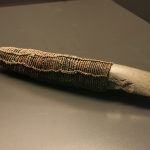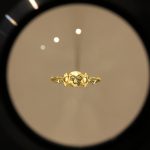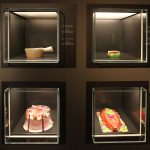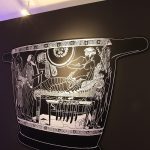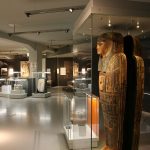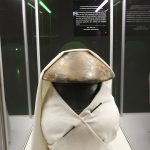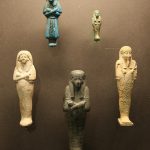Tod & Ritual – Kulturen von Abschied und Erinnerung @ Staatliches Museum für Archäologie Chemnitz
The old adage that the only certainties in life are death and taxes has become (more than) a little passé of late.
However even the accountants and investment bankers cannot, yet, avoid death.
With the exhibition Tod & Ritual – Kulturen von Abschied und Erinnerung the Staatliches Museum für Archäologie Chemnitz, smac, explore the historical and cultural traditions and rituals of that last remaining timeless, universal, and utterly inescapable phenomenon.
The prehistoric burial site at Niederkaina near Bautzen in the Oberlausitz is one of largest in Central Europe, and therefore one the most important archaeological sites in Central Europe, housing as it does graves stretching over a period of several hundred years, and thus serving as a unique chronicle of the evolving periods and peoples of the region.
As a result of extensive archaeological studies and survey researchers have been able to reconstruct a multi-phase death/burial ritual, a ritual which serves as the basis for Tod & Ritual – Kulturen von Abschied und Erinnerung [Death & Ritual – Cultures of Valediction and Remembrance], an exploration of not only of that as practised in Niederkaina, but death/burial rituals across cultures and centuries.
As an exhibition more concerned with the Ritual in the title than the Death, the exhibition very logically, if only, for us at least, in afterthought very logical, opens with the living, those left behind, and the subject of grief, including most graphically a small hand axe used to remove a finger from grieving relatives of a male deceased amongst the Dani in New Guinea, and so making the pain of their loss genuinely physical, before moving on to explore cultural attitudes to life after death, and the journey taken there, before travelling back to 2,500 BC and the origins of Niederkaina as a burial site.
Having explained the site, its topography and development over the centuries, the exhibition then briefly explains the nature of archaeological grave explorations before arriving at is the principal subject. Following the Niederkaina death/burial ritual through the course of its 8 stages from the death over the funeral procession, the cremation, burial to the final ritual opening of the grave and subsequent reburial, the exhibition explains the stages not only in context of the relevance for the prehistoric peoples of Central Europe, but also in comparison with global cultures, both contemporary and past.
Tod & Rituale ends with a look at contemporary burials/cremations and attitudes to death, or at least contemporary physical burials/cremations and attitudes to physical death. No doubt a future exhibition will explore in detail virtual/digital grieving, death, farewells and indeed questions of digital/virtual life after death.
Unless of course by then the accountants and investment bankers have managed to find legal ways to avoid life’s only remaining certainty.

A Chinese funeral procession meets a Niederkaina funeral procession, as seen at Tod & Ritual – Kulturen von Abschied und Erinnerung, Staatliches Museum für Archäologie Chemnitz
While you may or may not be what you eat, you are without question how you are buried. All cultures bury their dead, and a large part of Tod & Ritual is explaining the differences in the processes, traditions and beliefs. And as ever when comparing cultural differences one invariably arrives at a conclusion of same, same but different. And that not only in terms of cultures separated geographically but by time; something Tod & Rituale makes very clear through a series of simple comparisons. Comparisons such as the washing and dressing of the corpse, as practiced in Niederkaina and by the Ancient Egyptians; comparisons such as the funeral procession, something that, amongst others early Celtic cultures practised; comparisons such as post-burial acts of remembrance such as the preservation of Catholic Saints’ bones as holy relics for worship. Comparisons which help explain the universality of the grieving process and the role rituals and traditions play in helping us let go and say farewell.
As a profession archaeology is inextricably bound to the past, and when it comes to the dead, to a past that has no future; a stated aim of the smac is however to demonstrate that archaeology is also a contemporary disciple, which poses the obvious question of in how far such an exploration of a prehistoric death culture is relevant for us today?
“In the past death was much more present, had a more established place in daily life, wasn’t as distant as it is for us today”, answer Dr Jens Beutmann, Head of Exhibitions at SMAC, “and while that is in many respects a very positive situation, it does mean that when we are confronted with death it can be real shock. In ancient cultures that wasn’t the case, they were much clearer as to how to cope with death, and so if can we understand the historical context, that can help modern society cope better with an inevitability all societies have always lived with.”

A ritual dancer’s mask and wooden hands, from Toba-Batak, Sumatra, as seen at Tod & Ritual – Kulturen von Abschied und Erinnerung, Staatliches Museum für Archäologie Chemnitz
While we would agree with you dear reader that there are more pleasant subjects for an afternoon’s museum visit than death, Tod & Ritual isn’t about death, that is merely the necessary prerequisite for its principe focus, the culture of valediction, letting go, grieving, disposing of our family and friends
By necessity presenting a lot of articles in glass vitrines, including a lot of very small items in glass vitrines, Tod & Ritual is also by necessity a very abridged presentation, walking round it one is clear how wide the subject is, how numerous the cultures and epochs one could include, and how confused and confusing the whole thing could be become.
Through the intelligent decision to present the progression of the Niederkaina death/burial ritual as a parallel stream, procession?, to other death/burial rituals,and thereby bringing in the necessary restriction and control, the organisers have released an informative and entertaining exhibition which allows for not only a nice, coherent and informative introduction to, and overview of, one of the most important archaeological sites in Sachsen, and therefore neatly fulfilling a central function of the museum; but also bringing death to where it always has been, regardless of hard we try to ignore it, namely in the centre of society. And as a common bond, something which we all must go through, personally, yes, but for all in grieving for those who go before us.
Thereby allowing grieving to be understood as a universal process as normal as eating or paying taxes.
Tod & Ritual – Kulturen von Abschied und Erinnerung runs at the Staatliches Museum für Archäologie Chemnitz, Stefan-Heym-Platz 1, 09111 Chemnitz until Monday May 21st
Full details, including information on the accompanying fringe programme can be found at www.smac.sachsen.de
- Tod & Ritual – Kulturen von Abschied und Erinnerung, Staatliches Museum für Archäologie Chemnitz
- A device for removing the finger of a grieving member of the Dani, new Guinea, as seen at Tod & Ritual – Kulturen von Abschied und Erinnerung, Staatliches Museum für Archäologie Chemnitz
- A baroque ring found in a grave, as seen at Tod & Ritual – Kulturen von Abschied und Erinnerung, Staatliches Museum für Archäologie Chemnitz
- Paper food offerings burnt by the Chinese to feed the departed on the other side…..
- …..though we are unsure why anyone would want a Chicken burger….
- The Death of Hector from Homer’s Iliad. Hector was of course the first of the gang to die. Such a silly boy…..
- Depictions of the afterlife, as seen at Tod & Ritual – Kulturen von Abschied und Erinnerung, Staatliches Museum für Archäologie Chemnitz
- An Egyptian Mummy…..
- ……an a clothed Urn from Nederkaina…..
- Egyptian Uschebits, as seen at Tod & Ritual – Kulturen von Abschied und Erinnerung, Staatliches Museum für Archäologie Chemnitz
- A 2014 Paper urn by Kristina Rothe, as seen at Tod & Ritual – Kulturen von Abschied und Erinnerung, Staatliches Museum für Archäologie Chemnitz
- A record of the dead of Niederkaina….
Tagged with: chemnitz, smac, State Archaeology Museum, Tod & Ritual
